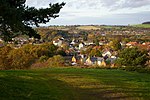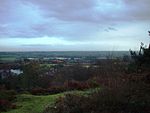Cofton Park
Buildings and structures completed in 1933Northfield ConstituencyParks and open spaces in Birmingham, West Midlands

Cofton Park (grid reference SP003762) is a park located in south Birmingham, England.
Excerpt from the Wikipedia article Cofton Park (License: CC BY-SA 3.0, Authors, Images).Cofton Park
Groveley Lane,
Geographical coordinates (GPS) Address Nearby Places Show on map
Geographical coordinates (GPS)
| Latitude | Longitude |
|---|---|
| N 52.38461 ° | E -1.99642 ° |
Address
Groveley Lane
Groveley Lane
B45 8UD
England, United Kingdom
Open on Google Maps






